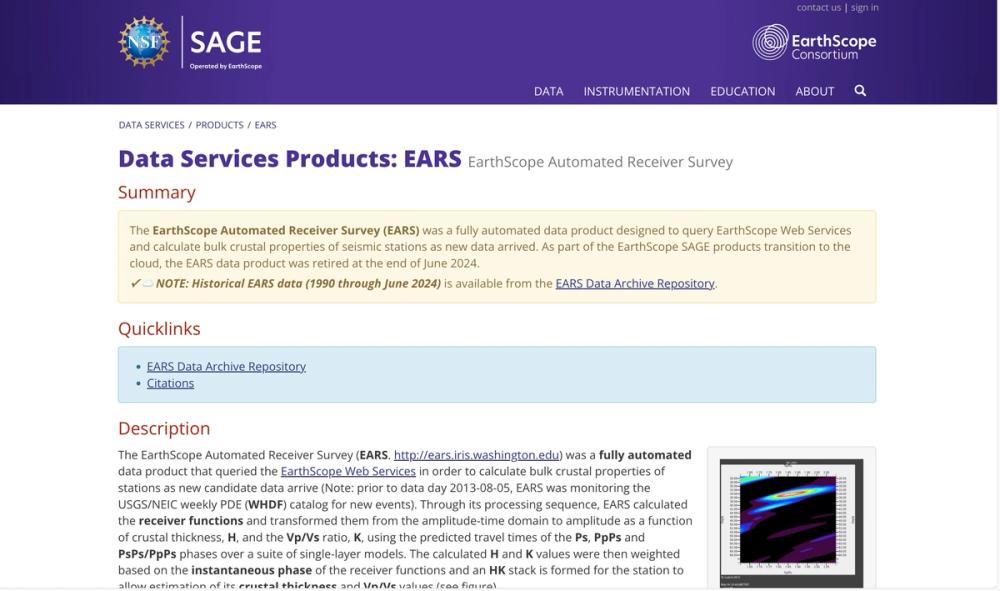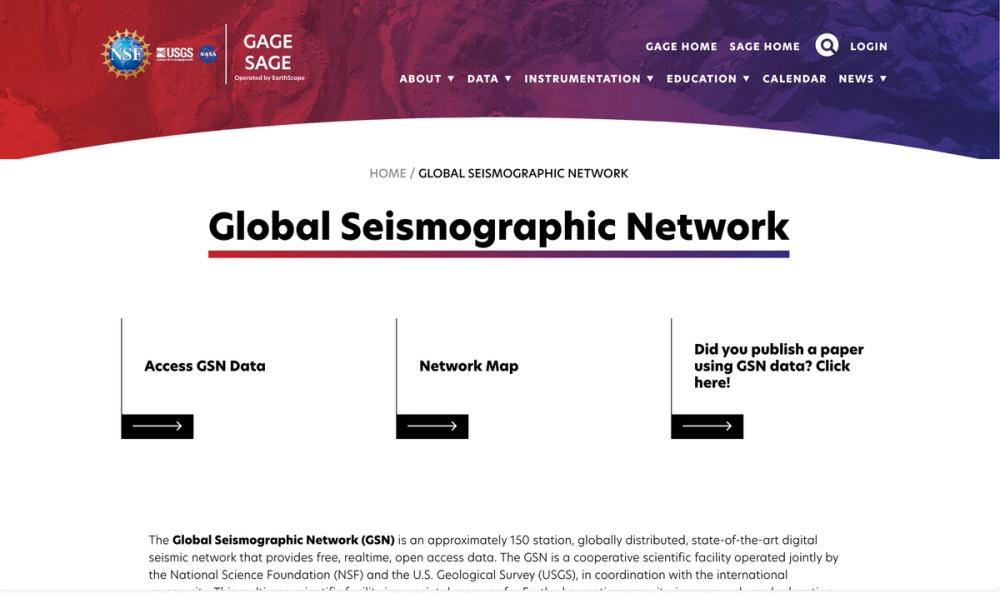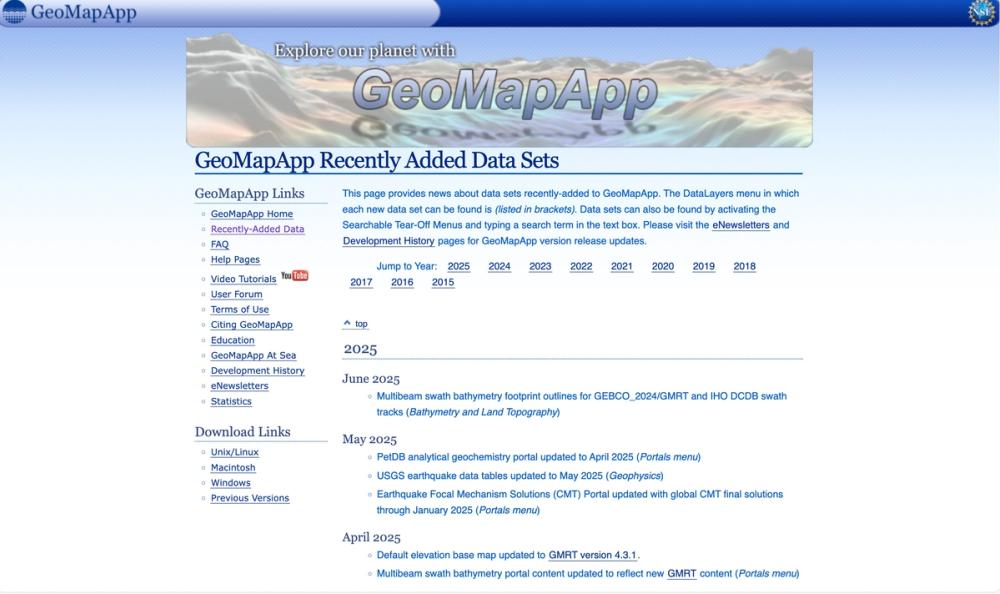EarthScope Automated Receiver Survey (EARS)
The EarthScope Automated Receiver Survey (EARS) was a fully automated data product developed to query EarthScope Web Services and calculate bulk crustal properties of seismic stations as new data arrived. Operating from 2010 until its retirement in June 2024, EARS processed seismic data to derive receiver functions, transforming them into estimates of crustal thickness (H) and Vp/Vs ratio (K) using predicted travel times of seismic phases (Ps, PpPs, PsPs/PpPs) over single-layer models. Historical data from 1990 to June 2024 is accessible via the EARS Data Archive Repository.
Key Features:
- Automation: Fully automated querying and processing of seismic data from EarthScope Web Services.
- Crustal Property Estimation: Calculated receiver functions to estimate crustal thickness and Vp/Vs ratios for over 2500 stations across 133 global networks.
- Historical Data Access: Provides access to a comprehensive archive of seismic data and derived products from 1990 to 2024.
- Integration: Initially developed for the USArray Transportable Array, later expanded to cover extensive waveform archives at IRIS DMC.
Use Cases:
- Seismological Research: Used by researchers to study crustal structure and properties across the continental United States and globally.
- Geophysical Analysis: Supported estimation of bulk crustal properties for understanding subsurface characteristics.
- Educational Purposes: Provided data for academic studies and training in geophysical data processing.
Unique Selling Points:
- Extensive Coverage: Processed data from a vast network of seismic stations worldwide.
- Automation and Scale: High level of automation allowed continuous updates with minimal manual intervention.
- Legacy Data: Despite retirement, offers valuable historical seismic data for ongoing and retrospective studies.




